
09 August 2024
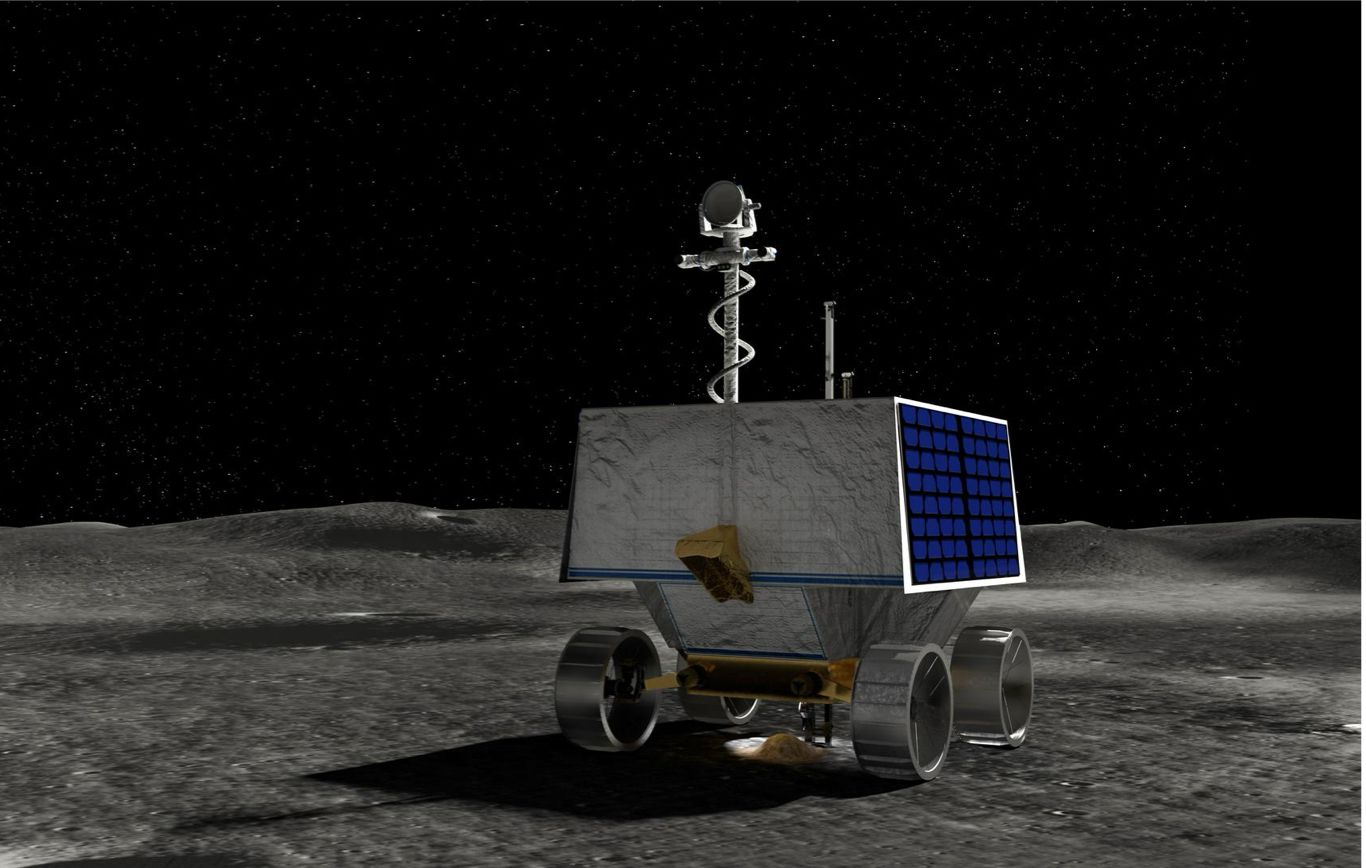
Illustration of VIPER (Image: NASA/Daniel Rutter)
Last week, we explored the increasing significance of the commercial sector in driving outer space exploration, as agencies like NASA delegate responsibilities to private companies in pursuit of more cost-effective solutions. In July, we also discussed the unexpected announcement that NASA will cancel its highly anticipated Volatiles Investigating Polar Exploration Rover (VIPER) mission, originally set to launch next year with Astrobotic (US) to explore the lunar south pole in search of water ice.
Before dismantling the rover to repurpose its components, NASA reached out to the industry to explore whether the mission could be salvaged without additional costs to the agency. Although NASA cited budget constraints and cost overruns as reasons for halting the mission, CNN reports that several commercial entities quickly stepped in with proposals to rescue the beleaguered rover. Among them, Intuitive Machines, the first private company to achieve a soft landing on the Moon, suggested a scaled-up version of their Nova lander to deliver VIPER in 2026 or 2027.
Tim Crain, cofounder and chief technology officer at Intuitive Machines, believes that despite VIPER being primarily designed for scientific discovery, it holds significant potential for commercial applications. According to Crain, the rover could provide valuable data on the composition of lunar soil, which would aid in the development of future rovers. Additionally, VIPER could deliver crucial insights into the composition of water on the Moon, a resource of immense interest as part of the emerging "lunar gold rush."
Reportedly, there’s also a petition containing 4,500 signatures making rounds in US congress, asking for the mission to be rescued, while lawmakers are also calling for NASA to reinstate the mission.
Whether the VIPER mission is salvaged by a commercial partner or revived by NASA under mounting pressure, this episode highlights the growing significance of lunar exploration. NASA has reaffirmed its commitment to other key projects, including the Artemis landing program and the PRIME-1 drill, the latter which will launch with Intuitive Machines later this year also to search for water ice at the lunar south pole. However, the increasing congressional pressure underscores the growing political influence in US lunar ambitions, as NASA faces what agency chief Bill Nelson describes as a lunar "race" with China.
NASA to award new CLPS contracts, new partnerships, and DARPA's lunar economy vision
The growing interest from companies like Intuitive Machines highlights the continuing shift of responsibilities to private entities in lunar transportation, exploration, and infrastructure development.
NASA’s PRIME mission is being delivered to the lunar surface through their Commercial Lunar Payload Services (CLPS) program, which involves the agency purchasing cargo delivery services rather than developing its own. This week, NASA announced new awards under CLPS, following the decision to select Firefly Aerospace to transport cargo to the Moon using their Blue Ghost lander.
NASA is set to issue a “CP-22” order soon, with a “CP-21” award to follow later this year, and two more awards will be granted in 2025. This increased reliance on private sector partnerships underscores a pivotal moment for NASA, which faces budgetary challenges. However, this shift also highlights the strength of the US in the New Space era, as commercialisation offers more efficient and cost-effective solutions, reinforcing and advancing American leadership in outer space exploration.
Intuitive Machines also this week announced a partnership with smallsat launch services company, SEOPS. Under the agreement, SEOPS will purchase capacity on future Intuitive Machines lunar missions, which it will then offer to customers who want to send smallsats to the moon or other destinations in cislunar space. SEOPS will also offer use of their orbital transfer vehicle (OTV) for “last mile” delivery services for satellite payloads.
DARPA lunar study for commercial lunar economy, wireless energy transfer on the Moon
In December 2023, the US Defence Advanced Research Projects Agency (DARPA) announced participants for their LunA-10 project, a 10-year study into the transitional development of a commercialised and interoperable lunar economy. In May they provided a 5-month update, stating that the selected companies had collaborated to present how their services and technologies could be applied and scaled on the Moon. One of the selected companies is Honeybee Robotics, who are developing a 100-metre LUNARSABER (Lunar Utility Navigation with Advanced Remote Sensing and Autonomous Beaming for Energy Redistribution) tower.
This is designed to support equipment and provide power, communications and lighting at a lunar base. Furthermore, it is also designed to transmit power charging wirelessly, a technology also being explored by Astrobotic under within their LunaGrid programme.
Yank Technologies (US) has this week awarded NASA Small Business Innovation research contracts (SBIR) also to demonstrate wireless power transfer technologies for lunar applications. The company is to develop two systems; Novel Wireless Power Receiver Converters for lunar rovers and Resonant Inductive Connectors for high voltage power transmission lines on the Moon, and also for use on Mars.
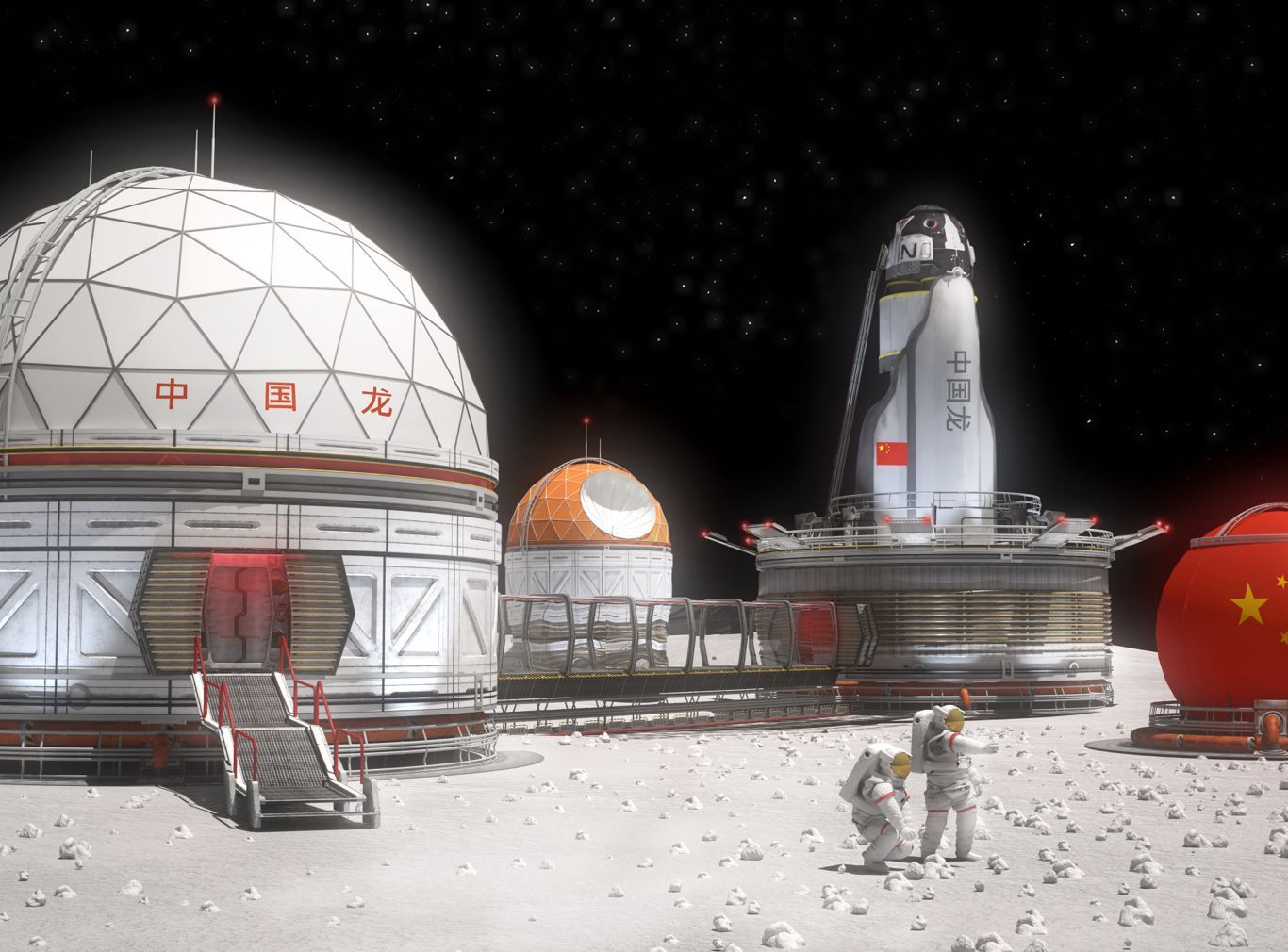
Mockup of Chinese Moon base (Image: Adobe)
China’s Lunar Discoveries and the Geopolitical Implications for Future Moon Missions
The commercial sector may be propelling US leadership in lunar exploration, but competition with China is intensifying. China’s Chang’e-6 lunar mission returned lunar samples from the far-side of the Moon for the first time in June this year, and recently Chinese researchers say they have discovered water in the samples retrieved by Chang’e-5, collected in 2020.
The discovery of water on the Moon isn’t anything new, but this particular finding may be significant. Scientists say it is the first time that water in its molecular form, H2O, has been found in physical samples, and it was retrieved from a part of the moon where they’d previously thought water in that form couldn’t exist. The discovery of such resources is key to China’s planned International Lunar Research Station (ILRS), to be constructed in the 2030s.
In addition, a team of researchers from the Chinese Academy of Sciences discovered the “supermaterial” graphene in a thin-layered structure on the Moon, also after studying the Chang’e-5 samples. Graphene is composed of single-layer carbon atoms arranged in a hexagonal honeycomb lattice, and has been touted as useful for a number of applications, and could be used on the Moon developing infrastructure. The research is also backed-up by findings in NASA’s Apollo samples, which showed the presence of graphite.
China will use the discoveries to propel their vision for the Moon. The successful Chang’e missions will be succeeded by Chang’e-7 (2026) and Chang’e-8 (2028), with the former aiming to gather data on lunar resources, and the latter to test in-situ resource utilisation technologies in anticipation of the construction of their lunar base (ILRS).
Advances in exploration and research must be matched by cooperation and law-making
Advances by global space leaders, China and the US, are shaping the future of the lunar and new space economy. Their initiatives, including China’s International Lunar Research Station (ILRS) and the US Artemis program, not only drive progress but also offer platforms for collaboration and opportunities for emerging space nations. This sentiment was echoed at the first UN Lunar Conference on Sustainable Lunar Activities in June, where leaders emphasised the need for coordination, cooperation and interoperability on the Moon.
This notion was further reinforced through the establishment of the Action Team on Lunar Activities Consultation (ATLAC) at the UN COPUOS meeting in June. ATLAC was proposed by the Romanian Space Agency and aims to provide a consultative mechanism at UN-level on activities such as improving safety, mitigating debris and lunar resource utilisation.
However, while such efforts must be applauded, we must observe what is happening closer to home, and also look towards human history, in order to understand the threats posed by distrust, frayed international relations and the expansion of geopolitical rivalries in space.
An article from the Australian Strategic Policy Institute this week highlighted concerns about potential geopolitical tensions, noting that “if China establishes the first permanent Moon base, it could disrupt the US-sponsored Artemis Accords on lunar colonisation and assert control over parts of the Moon” (aspistrategist.org, 2024). The article drew parallels with China’s attempts to secure an Antarctic Specially Managed Area (ASMA) around its Kunlun Station, a concept akin to the lunar “safety zones” outlined in the US Artemis Accords regulatory framework for outer space. These zones are intended to prevent interference and facilitate resource extraction in designated areas.
China’s Antarctic proposal has faced consistent rejection under the Antarctic Treaty System (ATS), leading to claims that China has obstructed unrelated decisions within the ATS framework. If similar issues arise on the Moon, could a consultative system like ATLAC be similarly obstructed? Conversely, if ATLAC establishes a system for approving safety zones, might it trigger a competitive race to claim and secure lunar territories?
These questions remain unresolved, highlighting the need for continued dialogue both at the UN level and among international working groups and NGOs, such as the Moon Village Association and the Global Expert Group on Sustainable Lunar Activities, among others. The history of space cooperation, exemplified by the ongoing collaboration on the ISS between Russia and Western partners, provides some hope. However, as the stakes in lunar and outer space exploration grow both strategically and commercially, so do the associated diplomatic and geopolitical challenges.

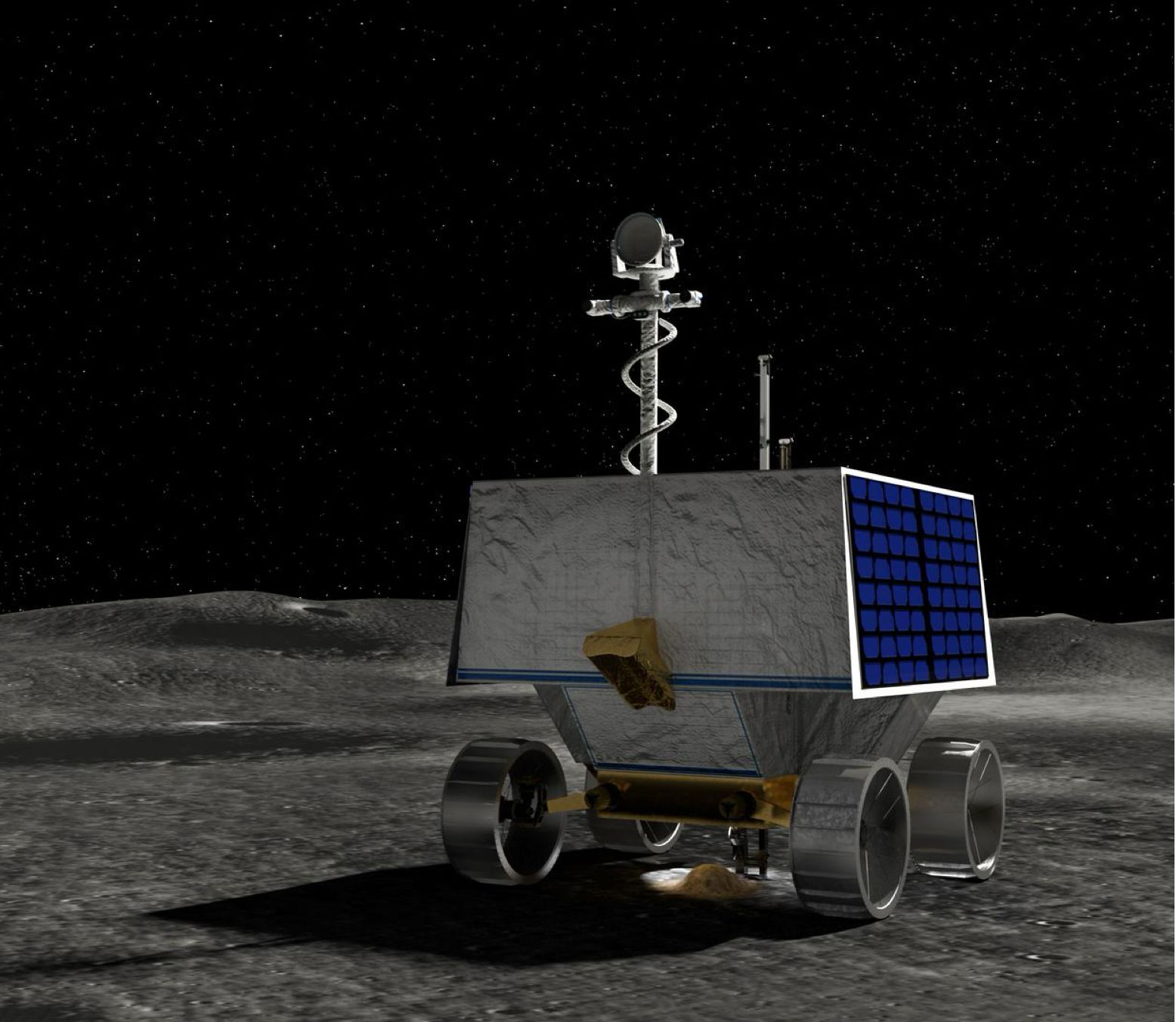
Illustration of VIPER (Image: NASA/Daniel Rutter)
09 August 2024
New U.S. Lunar Contracts, Efforts to Rescue NASA’s Moon Rover, and the Geopolitical Tensions Shaping Opportunities and Challenges - Space News Roundup

Last week, we explored the increasing significance of the commercial sector in driving outer space exploration, as agencies like NASA delegate responsibilities to private companies in pursuit of more cost-effective solutions. In July, we also discussed the unexpected announcement that NASA will cancel its highly anticipated Volatiles Investigating Polar Exploration Rover (VIPER) mission, originally set to launch next year with Astrobotic (US) to explore the lunar south pole in search of water ice.
Before dismantling the rover to repurpose its components, NASA reached out to the industry to explore whether the mission could be salvaged without additional costs to the agency. Although NASA cited budget constraints and cost overruns as reasons for halting the mission, CNN reports that several commercial entities quickly stepped in with proposals to rescue the beleaguered rover. Among them, Intuitive Machines, the first private company to achieve a soft landing on the Moon, suggested a scaled-up version of their Nova lander to deliver VIPER in 2026 or 2027.
Tim Crain, cofounder and chief technology officer at Intuitive Machines, believes that despite VIPER being primarily designed for scientific discovery, it holds significant potential for commercial applications. According to Crain, the rover could provide valuable data on the composition of lunar soil, which would aid in the development of future rovers. Additionally, VIPER could deliver crucial insights into the composition of water on the Moon, a resource of immense interest as part of the emerging "lunar gold rush."
Reportedly, there’s also a petition containing 4,500 signatures making rounds in US congress, asking for the mission to be rescued, while lawmakers are also calling for NASA to reinstate the mission.
Whether the VIPER mission is salvaged by a commercial partner or revived by NASA under mounting pressure, this episode highlights the growing significance of lunar exploration. NASA has reaffirmed its commitment to other key projects, including the Artemis landing program and the PRIME-1 drill, the latter which will launch with Intuitive Machines later this year also to search for water ice at the lunar south pole. However, the increasing congressional pressure underscores the growing political influence in US lunar ambitions, as NASA faces what agency chief Bill Nelson describes as a lunar "race" with China.
NASA to award new CLPS contracts, new partnerships, and DARPA's lunar economy vision
The growing interest from companies like Intuitive Machines highlights the continuing shift of responsibilities to private entities in lunar transportation, exploration, and infrastructure development.
NASA’s PRIME mission is being delivered to the lunar surface through their Commercial Lunar Payload Services (CLPS) program, which involves the agency purchasing cargo delivery services rather than developing its own. This week, NASA announced new awards under CLPS, following the decision to select Firefly Aerospace to transport cargo to the Moon using their Blue Ghost lander.
NASA is set to issue a “CP-22” order soon, with a “CP-21” award to follow later this year, and two more awards will be granted in 2025. This increased reliance on private sector partnerships underscores a pivotal moment for NASA, which faces budgetary challenges. However, this shift also highlights the strength of the US in the New Space era, as commercialisation offers more efficient and cost-effective solutions, reinforcing and advancing American leadership in outer space exploration.
Intuitive Machines also this week announced a partnership with smallsat launch services company, SEOPS. Under the agreement, SEOPS will purchase capacity on future Intuitive Machines lunar missions, which it will then offer to customers who want to send smallsats to the moon or other destinations in cislunar space. SEOPS will also offer use of their orbital transfer vehicle (OTV) for “last mile” delivery services for satellite payloads.
DARPA lunar study for commercial lunar economy, wireless energy transfer on the Moon
In December 2023, the US Defence Advanced Research Projects Agency (DARPA) announced participants for their LunA-10 project, a 10-year study into the transitional development of a commercialised and interoperable lunar economy. In May they provided a 5-month update, stating that the selected companies had collaborated to present how their services and technologies could be applied and scaled on the Moon. One of the selected companies is Honeybee Robotics, who are developing a 100-metre LUNARSABER (Lunar Utility Navigation with Advanced Remote Sensing and Autonomous Beaming for Energy Redistribution) tower.
This is designed to support equipment and provide power, communications and lighting at a lunar base. Furthermore, it is also designed to transmit power charging wirelessly, a technology also being explored by Astrobotic under within their LunaGrid programme.
Yank Technologies (US) has this week awarded NASA Small Business Innovation research contracts (SBIR) also to demonstrate wireless power transfer technologies for lunar applications. The company is to develop two systems; Novel Wireless Power Receiver Converters for lunar rovers and Resonant Inductive Connectors for high voltage power transmission lines on the Moon, and also for use on Mars.
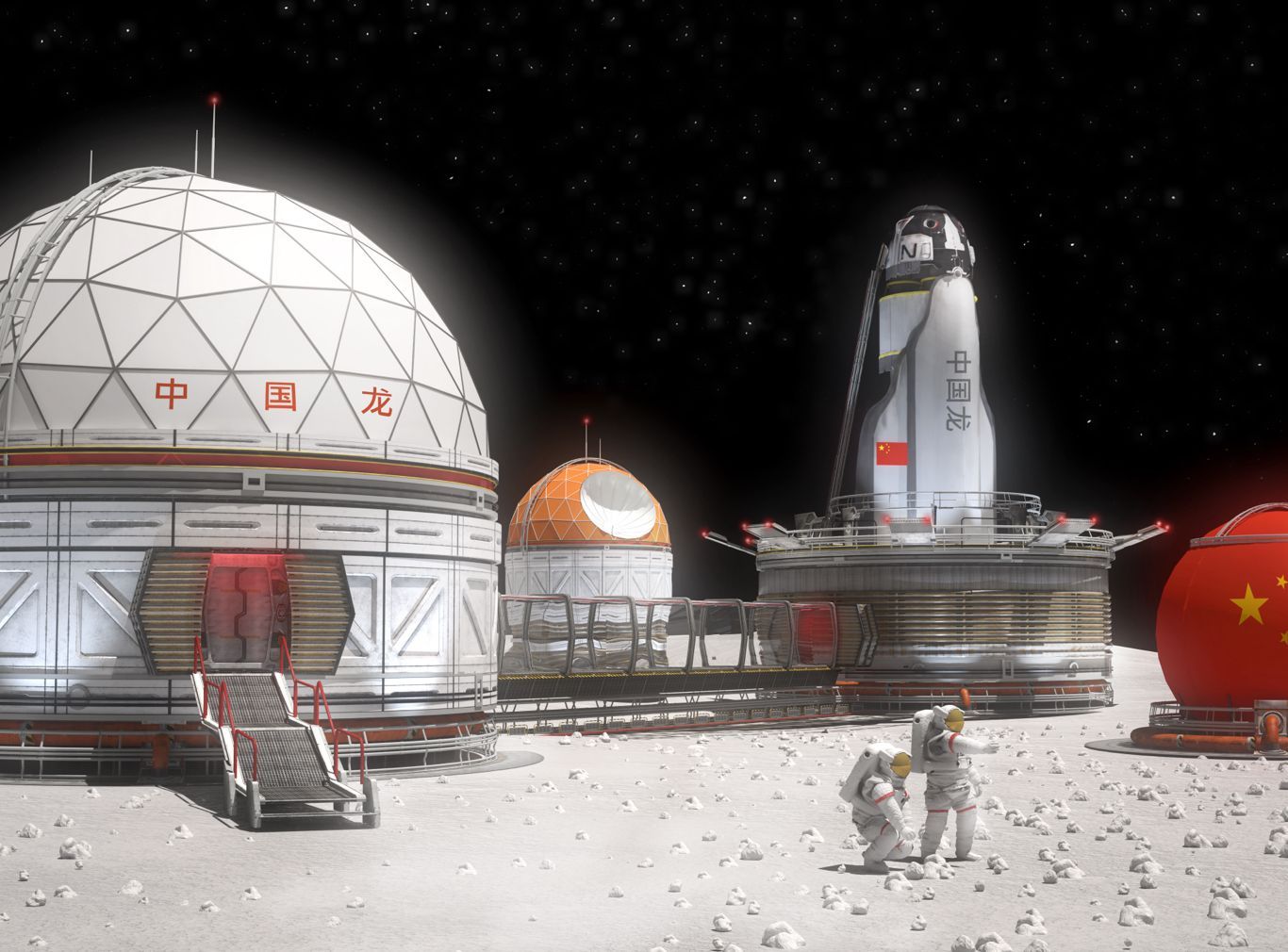
Mockup of Chinese Moon base (Image: Adobe)
China’s Lunar Discoveries and the Geopolitical Implications for Future Moon Missions
The commercial sector may be propelling US leadership in lunar exploration, but competition with China is intensifying. China’s Chang’e-6 lunar mission returned lunar samples from the far-side of the Moon for the first time in June this year, and recently Chinese researchers say they have discovered water in the samples retrieved by Chang’e-5, collected in 2020.
The discovery of water on the Moon isn’t anything new, but this particular finding may be significant. Scientists say it is the first time that water in its molecular form, H2O, has been found in physical samples, and it was retrieved from a part of the moon where they’d previously thought water in that form couldn’t exist. The discovery of such resources is key to China’s planned International Lunar Research Station (ILRS), to be constructed in the 2030s.
In addition, a team of researchers from the Chinese Academy of Sciences discovered the “supermaterial” graphene in a thin-layered structure on the Moon, also after studying the Chang’e-5 samples. Graphene is composed of single-layer carbon atoms arranged in a hexagonal honeycomb lattice, and has been touted as useful for a number of applications, and could be used on the Moon developing infrastructure. The research is also backed-up by findings in NASA’s Apollo samples, which showed the presence of graphite.
China will use the discoveries to propel their vision for the Moon. The successful Chang’e missions will be succeeded by Chang’e-7 (2026) and Chang’e-8 (2028), with the former aiming to gather data on lunar resources, and the latter to test in-situ resource utilisation technologies in anticipation of the construction of their lunar base (ILRS).
Advances in exploration and research must be matched by cooperation and law-making
Advances by global space leaders, China and the US, are shaping the future of the lunar and new space economy. Their initiatives, including China’s International Lunar Research Station (ILRS) and the US Artemis program, not only drive progress but also offer platforms for collaboration and opportunities for emerging space nations. This sentiment was echoed at the first UN Lunar Conference on Sustainable Lunar Activities in June, where leaders emphasised the need for coordination, cooperation and interoperability on the Moon.
This notion was further reinforced through the establishment of the Action Team on Lunar Activities Consultation (ATLAC) at the UN COPUOS meeting in June. ATLAC was proposed by the Romanian Space Agency and aims to provide a consultative mechanism at UN-level on activities such as improving safety, mitigating debris and lunar resource utilisation.
However, while such efforts must be applauded, we must observe what is happening closer to home, and also look towards human history, in order to understand the threats posed by distrust, frayed international relations and the expansion of geopolitical rivalries in space.
An article from the Australian Strategic Policy Institute this week highlighted concerns about potential geopolitical tensions, noting that “if China establishes the first permanent Moon base, it could disrupt the US-sponsored Artemis Accords on lunar colonisation and assert control over parts of the Moon” (aspistrategist.org, 2024). The article drew parallels with China’s attempts to secure an Antarctic Specially Managed Area (ASMA) around its Kunlun Station, a concept akin to the lunar “safety zones” outlined in the US Artemis Accords regulatory framework for outer space. These zones are intended to prevent interference and facilitate resource extraction in designated areas.
China’s Antarctic proposal has faced consistent rejection under the Antarctic Treaty System (ATS), leading to claims that China has obstructed unrelated decisions within the ATS framework. If similar issues arise on the Moon, could a consultative system like ATLAC be similarly obstructed? Conversely, if ATLAC establishes a system for approving safety zones, might it trigger a competitive race to claim and secure lunar territories?
These questions remain unresolved, highlighting the need for continued dialogue both at the UN level and among international working groups and NGOs, such as the Moon Village Association and the Global Expert Group on Sustainable Lunar Activities, among others. The history of space cooperation, exemplified by the ongoing collaboration on the ISS between Russia and Western partners, provides some hope. However, as the stakes in lunar and outer space exploration grow both strategically and commercially, so do the associated diplomatic and geopolitical challenges.
Share this article


09 August 2024
New U.S. Lunar Contracts, Efforts to Rescue NASA’s Moon Rover, and the Geopolitical Tensions Shaping Opportunities and Challenges - Space News Roundup

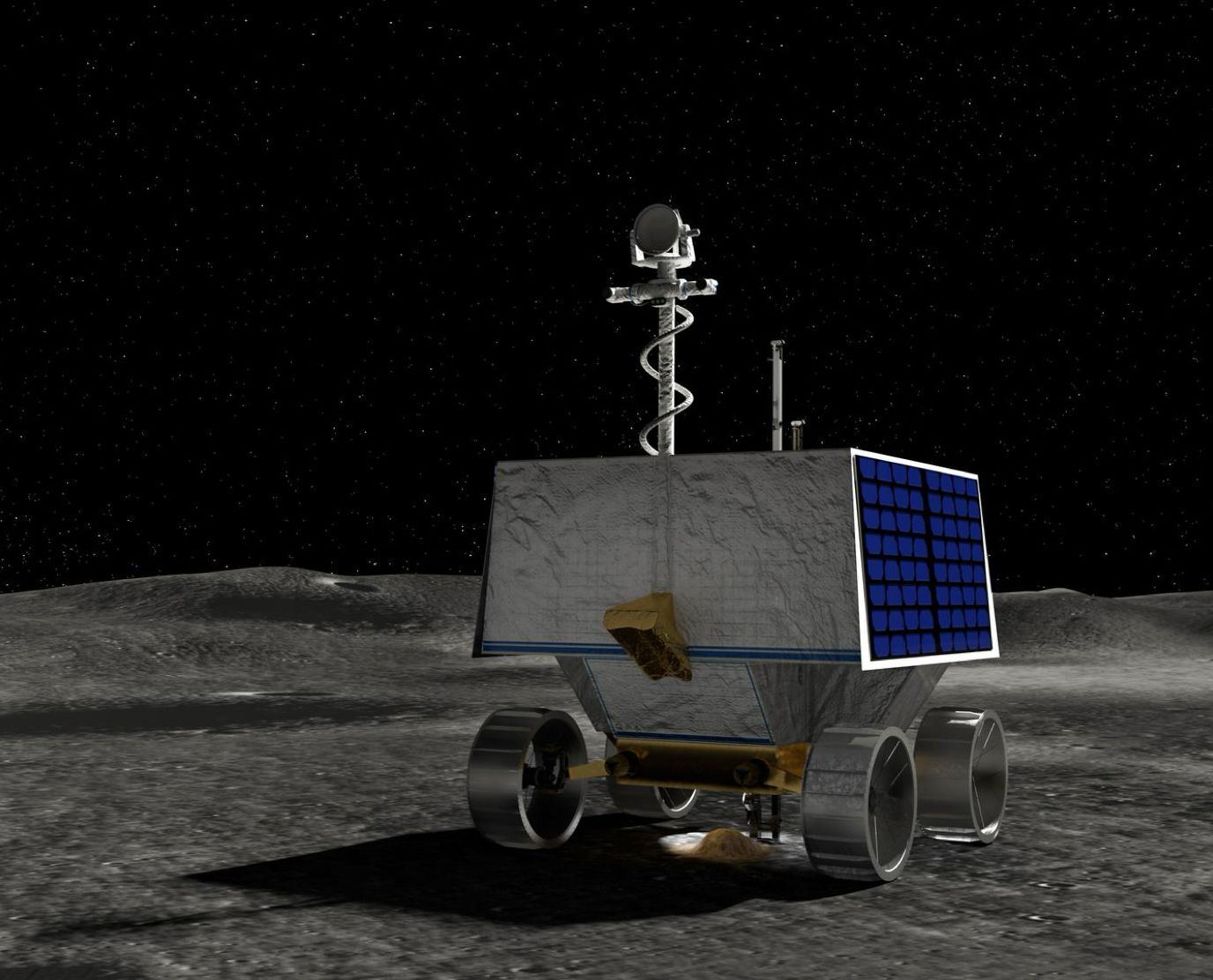
Illustration of VIPER (Image: NASA/Daniel Rutter)
Last week, we explored the increasing significance of the commercial sector in driving outer space exploration, as agencies like NASA delegate responsibilities to private companies in pursuit of more cost-effective solutions. In July, we also discussed the unexpected announcement that NASA will cancel its highly anticipated Volatiles Investigating Polar Exploration Rover (VIPER) mission, originally set to launch next year with Astrobotic (US) to explore the lunar south pole in search of water ice.
Before dismantling the rover to repurpose its components, NASA reached out to the industry to explore whether the mission could be salvaged without additional costs to the agency. Although NASA cited budget constraints and cost overruns as reasons for halting the mission, CNN reports that several commercial entities quickly stepped in with proposals to rescue the beleaguered rover. Among them, Intuitive Machines, the first private company to achieve a soft landing on the Moon, suggested a scaled-up version of their Nova lander to deliver VIPER in 2026 or 2027.
Tim Crain, cofounder and chief technology officer at Intuitive Machines, believes that despite VIPER being primarily designed for scientific discovery, it holds significant potential for commercial applications. According to Crain, the rover could provide valuable data on the composition of lunar soil, which would aid in the development of future rovers. Additionally, VIPER could deliver crucial insights into the composition of water on the Moon, a resource of immense interest as part of the emerging "lunar gold rush."
Reportedly, there’s also a petition containing 4,500 signatures making rounds in US congress, asking for the mission to be rescued, while lawmakers are also calling for NASA to reinstate the mission.
Whether the VIPER mission is salvaged by a commercial partner or revived by NASA under mounting pressure, this episode highlights the growing significance of lunar exploration. NASA has reaffirmed its commitment to other key projects, including the Artemis landing program and the PRIME-1 drill, the latter which will launch with Intuitive Machines later this year also to search for water ice at the lunar south pole. However, the increasing congressional pressure underscores the growing political influence in US lunar ambitions, as NASA faces what agency chief Bill Nelson describes as a lunar "race" with China.
NASA to award new CLPS contracts, new partnerships, and DARPA's lunar economy vision
The growing interest from companies like Intuitive Machines highlights the continuing shift of responsibilities to private entities in lunar transportation, exploration, and infrastructure development.
NASA’s PRIME mission is being delivered to the lunar surface through their Commercial Lunar Payload Services (CLPS) program, which involves the agency purchasing cargo delivery services rather than developing its own. This week, NASA announced new awards under CLPS, following the decision to select Firefly Aerospace to transport cargo to the Moon using their Blue Ghost lander.
NASA is set to issue a “CP-22” order soon, with a “CP-21” award to follow later this year, and two more awards will be granted in 2025. This increased reliance on private sector partnerships underscores a pivotal moment for NASA, which faces budgetary challenges. However, this shift also highlights the strength of the US in the New Space era, as commercialisation offers more efficient and cost-effective solutions, reinforcing and advancing American leadership in outer space exploration.
Intuitive Machines also this week announced a partnership with smallsat launch services company, SEOPS. Under the agreement, SEOPS will purchase capacity on future Intuitive Machines lunar missions, which it will then offer to customers who want to send smallsats to the moon or other destinations in cislunar space. SEOPS will also offer use of their orbital transfer vehicle (OTV) for “last mile” delivery services for satellite payloads.
DARPA lunar study for commercial lunar economy, wireless energy transfer on the Moon
In December 2023, the US Defence Advanced Research Projects Agency (DARPA) announced participants for their LunA-10 project, a 10-year study into the transitional development of a commercialised and interoperable lunar economy. In May they provided a 5-month update, stating that the selected companies had collaborated to present how their services and technologies could be applied and scaled on the Moon. One of the selected companies is Honeybee Robotics, who are developing a 100-metre LUNARSABER (Lunar Utility Navigation with Advanced Remote Sensing and Autonomous Beaming for Energy Redistribution) tower.
This is designed to support equipment and provide power, communications and lighting at a lunar base. Furthermore, it is also designed to transmit power charging wirelessly, a technology also being explored by Astrobotic under within their LunaGrid programme.
Yank Technologies (US) has this week awarded NASA Small Business Innovation research contracts (SBIR) also to demonstrate wireless power transfer technologies for lunar applications. The company is to develop two systems; Novel Wireless Power Receiver Converters for lunar rovers and Resonant Inductive Connectors for high voltage power transmission lines on the Moon, and also for use on Mars.
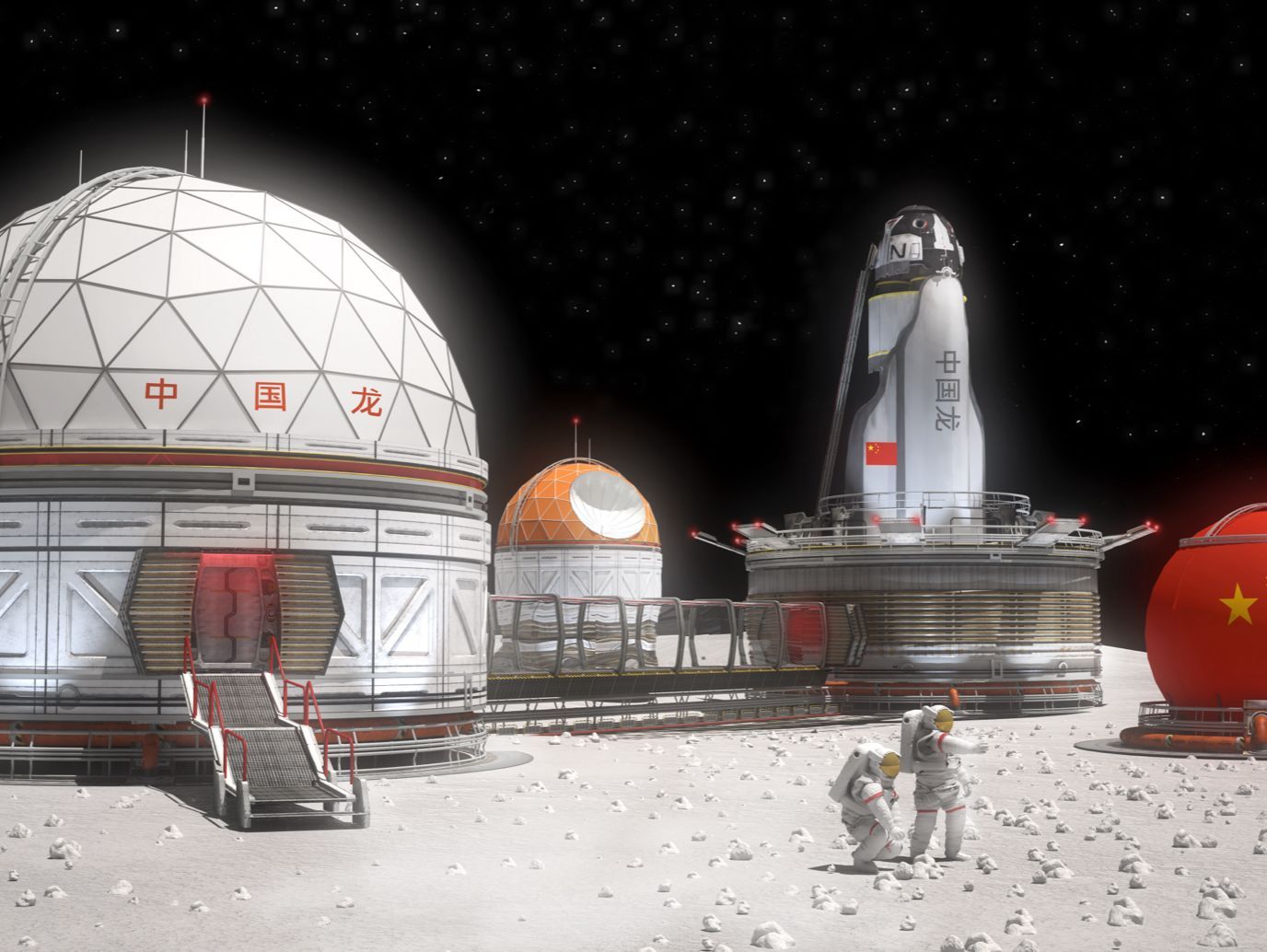
Mockup of Chinese Moon base (Image: Adobe)
China’s Lunar Discoveries and the Geopolitical Implications for Future Moon Missions
The commercial sector may be propelling US leadership in lunar exploration, but competition with China is intensifying. China’s Chang’e-6 lunar mission returned lunar samples from the far-side of the Moon for the first time in June this year, and recently Chinese researchers say they have discovered water in the samples retrieved by Chang’e-5, collected in 2020.
The discovery of water on the Moon isn’t anything new, but this particular finding may be significant. Scientists say it is the first time that water in its molecular form, H2O, has been found in physical samples, and it was retrieved from a part of the moon where they’d previously thought water in that form couldn’t exist. The discovery of such resources is key to China’s planned International Lunar Research Station (ILRS), to be constructed in the 2030s.
In addition, a team of researchers from the Chinese Academy of Sciences discovered the “supermaterial” graphene in a thin-layered structure on the Moon, also after studying the Chang’e-5 samples. Graphene is composed of single-layer carbon atoms arranged in a hexagonal honeycomb lattice, and has been touted as useful for a number of applications, and could be used on the Moon developing infrastructure. The research is also backed-up by findings in NASA’s Apollo samples, which showed the presence of graphite.
China will use the discoveries to propel their vision for the Moon. The successful Chang’e missions will be succeeded by Chang’e-7 (2026) and Chang’e-8 (2028), with the former aiming to gather data on lunar resources, and the latter to test in-situ resource utilisation technologies in anticipation of the construction of their lunar base (ILRS).
Advances in exploration and research must be matched by cooperation and law-making
Advances by global space leaders, China and the US, are shaping the future of the lunar and new space economy. Their initiatives, including China’s International Lunar Research Station (ILRS) and the US Artemis program, not only drive progress but also offer platforms for collaboration and opportunities for emerging space nations. This sentiment was echoed at the first UN Lunar Conference on Sustainable Lunar Activities in June, where leaders emphasised the need for coordination, cooperation and interoperability on the Moon.
This notion was further reinforced through the establishment of the Action Team on Lunar Activities Consultation (ATLAC) at the UN COPUOS meeting in June. ATLAC was proposed by the Romanian Space Agency and aims to provide a consultative mechanism at UN-level on activities such as improving safety, mitigating debris and lunar resource utilisation.
However, while such efforts must be applauded, we must observe what is happening closer to home, and also look towards human history, in order to understand the threats posed by distrust, frayed international relations and the expansion of geopolitical rivalries in space.
An article from the Australian Strategic Policy Institute this week highlighted concerns about potential geopolitical tensions, noting that “if China establishes the first permanent Moon base, it could disrupt the US-sponsored Artemis Accords on lunar colonisation and assert control over parts of the Moon” (aspistrategist.org, 2024). The article drew parallels with China’s attempts to secure an Antarctic Specially Managed Area (ASMA) around its Kunlun Station, a concept akin to the lunar “safety zones” outlined in the US Artemis Accords regulatory framework for outer space. These zones are intended to prevent interference and facilitate resource extraction in designated areas.
China’s Antarctic proposal has faced consistent rejection under the Antarctic Treaty System (ATS), leading to claims that China has obstructed unrelated decisions within the ATS framework. If similar issues arise on the Moon, could a consultative system like ATLAC be similarly obstructed? Conversely, if ATLAC establishes a system for approving safety zones, might it trigger a competitive race to claim and secure lunar territories?
These questions remain unresolved, highlighting the need for continued dialogue both at the UN level and among international working groups and NGOs, such as the Moon Village Association and the Global Expert Group on Sustainable Lunar Activities, among others. The history of space cooperation, exemplified by the ongoing collaboration on the ISS between Russia and Western partners, provides some hope. However, as the stakes in lunar and outer space exploration grow both strategically and commercially, so do the associated diplomatic and geopolitical challenges.
Share this article

